HEALTH
Revealing What to Expect From a Red Light Therapy Session
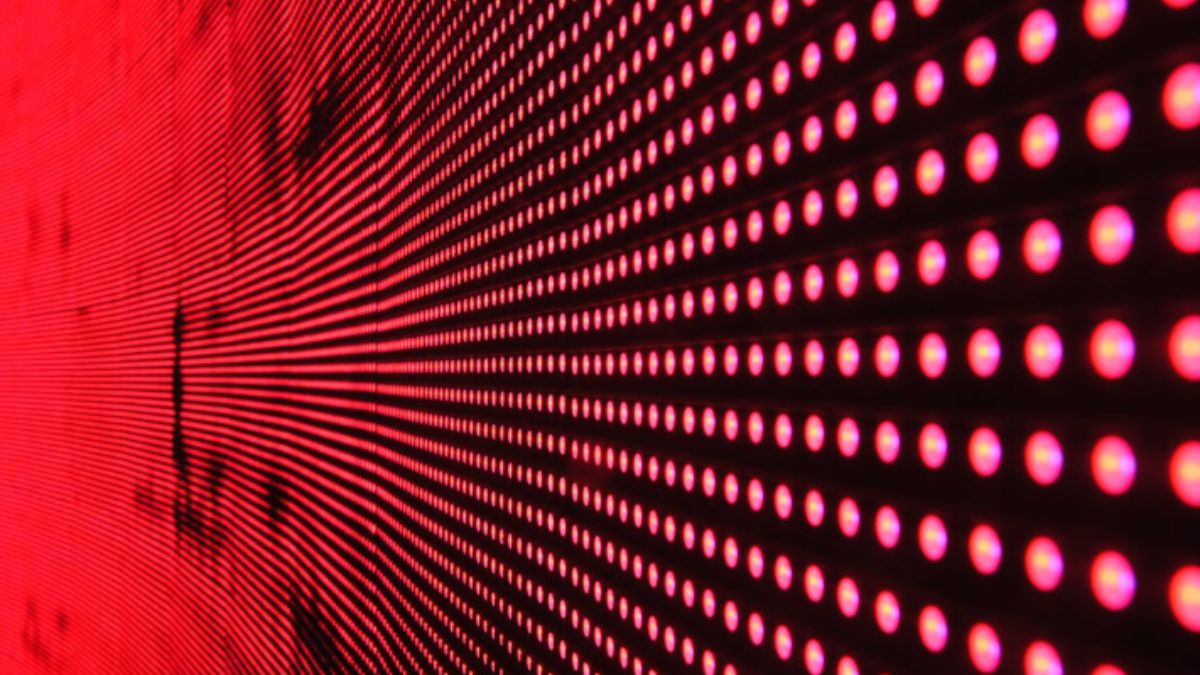
Red light therapy is rapidly gaining traction for its potential to support skin care goals, ease discomfort, and offer a quiet moment away from a hectic schedule. This non-invasive treatment uses low-wavelength red light to stimulate cellular repair and regeneration. Many who try it are curious about what exactly happens during a session and what kind of changes they might begin to notice. Whether you’re new to this therapy or considering adding it to your routine, understanding what to expect can help set your mind at ease.
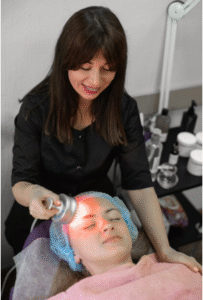
Skin Rejuvenation and the Role of Red Light
Among the most talked-about uses of red light therapy is skin rejuvenation. The process is grounded in the idea that red light can stimulate collagen production and improve circulation at the cellular level. These changes can gradually soften fine lines and bring a more even tone to the surface. During a typical session, light penetrates the skin without causing damage or discomfort, unlike more aggressive treatments. One popular option for those looking to support this effect is the Kandyway Eternal Glow facial mask, which delivers red light in a controlled manner across the face. By offering regular sessions, it may help reduce the appearance of dull or uneven skin while supporting natural texture and firmness. Those who use red light therapy consistently for rejuvenation tend to report a slow but steady shift toward smoother and more resilient skin over time.
What Happens During a Session?
When you walk into a red light therapy session, you’ll typically be guided to a private space, such as a treatment room or a designated area in a wellness center. Most providers ask that you remove any makeup or products that could interfere with light absorption. After settling in, you’ll either lie down or sit comfortably in front of a panel that emits low-level red light. If you’re using a facial mask at home, such as the one mentioned earlier, you’ll likely position it on clean skin before activating the device.
The light is not hot or intense, so there’s no burning sensation or discomfort involved. Sessions typically last between 10 and 20 minutes, depending on the area being treated and the type of device used. During this time, many people use the opportunity to rest or listen to calming audio. The process is silent, non-invasive, and doesn’t leave any visible marks afterward. Once the light exposure ends, you’re free to go about your day without needing any recovery time.
How It Feels and What to Expect Immediately After
One of the first things people notice during a session is a sense of warmth, not from heat but from the relaxing experience of sitting still under a soft light. There’s no pressure, no pinching, and no need for protective measures like numbing creams or goggles unless the device is particularly bright. The light feels soothing to most, making the session feel closer to quiet rest than a traditional skin treatment.
After a session, the skin might feel slightly energized or refreshed. No redness, peeling, or irritation follows. You don’t need to apply any special product afterward unless advised by a skincare professional. Most people return to their daily activities immediately. Some choose to incorporate it into their morning routine, while others find it helps them wind down at the end of the day. The appeal often lies in its simplicity, no needles, no recovery, just a steady routine that may gradually support visible improvements.
Frequency and Consistency: The Key to Results
One session won’t bring a dramatic transformation. The effects of red light therapy are cumulative, which means regular use over weeks or months is typically required to notice visible results. Whether you’re visiting a clinic or using a mask at home, a schedule of two to five sessions per week is common in the early stages. Over time, this can be adjusted based on how your skin responds and what your goals are.
Consistency is what tends to yield the most noticeable changes. Collagen production, cell turnover, and reduced inflammation don’t happen overnight. Think of it as investing in long-term support for your skin, much like a good diet or regular exercise. Those who stick with it often report that their complexion appears more balanced and their skin texture feels more refined over time.
Beyond Skin: Other Benefits of Red Light Therapy
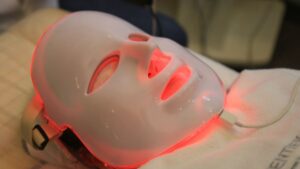
While skin care often takes center stage, red light therapy may offer more. Some people turn to it for relief from mild muscle discomfort, joint stiffness, or fatigue. The low-wavelength light is thought to penetrate into deeper tissues, where it may support circulation and cellular repair. Whether you’re an athlete managing post-exercise recovery or someone dealing with day-to-day tension, red light therapy can be part of a larger wellness routine.
Red light therapy offers a quiet, low-effort way to support long-term skin care and general well-being. Each session is calm and non-invasive, making it easy to fit into even the busiest schedule. Whether you’re considering this therapy for the first time or exploring new ways to refresh your routine, knowing what to expect can make each session more effective and rewarding.
HEALTH
doctorhub360.com: Your Complete Guide to Modern Online Healthcare

In an age where virtual healthcare has become a daily necessity, doctorhub360.com stands out as a comprehensive digital platform connecting patients with certified doctors, specialists, and healthcare services from the comfort of home. With the rising demand for telemedicine, this platform redefines accessibility by merging technology and healthcare under one secure, user-friendly hub.
The medical industry has evolved beyond the four walls of hospitals. Patients now seek convenience, quick access, and reliable medical advice online — and that’s exactly what doctorhub360.com promises to deliver: a 360-degree healthcare experience that covers consultation, diagnosis, prescriptions, and continuous health monitoring.
Quick Answer
doctorhub360.com is an all-in-one telemedicine platform offering 24/7 doctor consultations, digital prescriptions, appointment booking, and secure health record management — all accessible through desktop and mobile devices for fast, reliable, and private care.
The Growing Role of Online Healthcare
The global digital health market has witnessed exponential growth in recent years. According to medical analysts, over 60 % of doctor consultations in 2025 will take place online or through hybrid systems. Platforms like doctorhub360.com are at the forefront of this evolution, enabling users to speak to doctors anytime, anywhere, without waiting rooms or travel costs.
“Telehealth isn’t the future — it’s the present,” says Dr. Mariah Bennett, a family medicine specialist and digital-care advocate. “Platforms like doctorhub360.com simplify patient access to quality medical care while maintaining the same level of professional reliability.”
Key Features of doctorhub360.com
doctorhub360.com has been designed to simplify healthcare for both patients and practitioners. Below are its standout features that contribute to its growing reputation.
1. Instant Online Consultations
The platform allows users to book instant video calls or chat sessions with licensed physicians across multiple specialties — from general medicine to dermatology and mental health.
2. Secure Prescription Services
After a consultation, doctors can send digital prescriptions directly to your profile or linked pharmacy. Every prescription follows national medical standards and includes dosage and follow-up guidance.
3. Health Record Integration
Patients can store, access, and share their electronic health records (EHRs) within the platform. This allows for better tracking of chronic conditions and faster emergency response.
4. 24/7 Availability
With round-the-clock medical support, doctorhub360.com ensures help is always available. Whether it’s a midnight fever or an urgent refill, patients can reach certified healthcare professionals instantly.
5. Multilingual and Accessible Interface
The platform supports multiple languages and accessibility tools for users with disabilities — making it inclusive and easy to use worldwide.
Why doctorhub360.com Is Changing the Way We See Healthcare
doctorhub360.com combines the trust of in-person healthcare with the speed and convenience of digital technology. Patients save time, reduce costs, and get immediate answers — all while maintaining data privacy.
Moreover, it empowers doctors by providing an integrated workspace for managing appointments, billing, and patient history. The result is a more efficient healthcare ecosystem that benefits both sides.
Advantages for Patients
- Immediate access to professional medical advice
- Transparent pricing and service clarity
- No travel, waiting rooms, or hospital queues
- Flexible consultation options (text, audio, video)
Advantages for Doctors
- Wider patient reach
- Automated scheduling
- Secure medical documentation
- Streamlined communication and follow-ups
Comparison Table: doctorhub360.com vs. Other Telemedicine Platforms
| Feature / Metric | doctorhub360.com | General Telemedicine Site A | General Telemedicine Site B | Hospital App C |
|---|---|---|---|---|
| Consultation Cost | Moderate, transparent | High | Low | Variable |
| Ease of Use | Intuitive dashboard, multilingual | Complex interface | Average | Limited |
| Accessibility | 24/7 support, cross-device | Restricted hours | Limited devices | Hospital-based only |
| Performance Speed | High (optimized servers) | Moderate | High | Slow response times |
| Data Security | HIPAA-grade encryption | Standard SSL | Basic security | Varies |
| Prescription Integration | Instant e-prescriptions | Manual approval | Limited | Full but slow |
| Overall Efficiency | ★★★★★ | ★★★ | ★★★★ | ★★★ |
Table 1: Comparative analysis of doctorhub360.com against common telehealth alternatives (data simulated for illustration).
How doctorhub360.com Works: Step-by-Step
Step 1 – Sign Up
Register using your email or mobile number. Identity verification ensures each account belongs to a real person.
Step 2 – Select a Specialty
Choose from general practitioners, pediatricians, nutritionists, psychiatrists, and more.
Step 3 – Book Consultation
Pick your preferred time slot or use instant connect for emergencies.
Step 4 – Attend Appointment
Meet your doctor via HD video chat or secure text messaging. Upload relevant test results if needed.
Step 5 – Receive Prescription and Follow-Up
Your doctor issues a secure digital prescription and follow-up reminders directly through your dashboard.
Security and Privacy: The Core of Trust
Healthcare is impossible without trust, and doctorhub360.com invests heavily in data encryption and patient confidentiality. The system uses HIPAA-compliant frameworks, two-factor authentication, and restricted access controls for doctors and admins.
According to the Health Information Privacy Council (HIPC), data protection is among the top three priorities in digital medicine. Doctorhub360.com meets these standards by maintaining end-to-end security during every consultation.
“The moment patients feel safe sharing their symptoms online, the digital care system succeeds,” states cybersecurity expert Alan Rhodes, emphasizing privacy as a prerequisite for innovation.
User Experience and Interface Design
The interface of doctorhub360.com is tailored for simplicity. It minimizes clicks, integrates quick-action icons, and provides smart notifications for prescriptions, appointments, and updates.
Highlights
- Clean dashboard with patient-doctor messaging
- Voice-command accessibility
- Custom health reminders and smart notifications
- Multi-device synchronization
These enhancements ensure that both young adults and seniors can navigate healthcare online without frustration.
Industry Standards and Professional Compliance
doctorhub360.com aligns with several international healthcare standards, including:
- HIPAA (Health Insurance Portability and Accountability Act) for U.S. data protection
- HL7 v2 & FHIR protocols for secure health record exchange
- ISO/IEC 27001 for information security management
This compliance strengthens its credibility among both practitioners and patients. Doctors using the platform must verify their medical licenses and professional credentials, ensuring a network of trusted specialists.
Accessibility and Inclusivity
The platform promotes universal healthcare access, especially for rural or mobility-limited users. By bridging the digital divide, doctorhub360.com empowers individuals who previously lacked consistent medical access.
It also supports screen readers, text-to-speech tools, and adjustable contrast modes for visually impaired users — reflecting modern inclusivity standards.
The Economic Advantage
Traditional doctor visits can involve transportation, waiting time, and costly diagnostics. doctorhub360.com reduces these overheads by digitizing most non-emergency care processes.
On average, telehealth users save up to 45 % on consultation expenses, according to a report by the American Health Economics Review. Employers also benefit, as remote care reduces absenteeism and enhances productivity.
EXPERT ANSWERS
1. Is doctorhub360.com safe to use?
Yes. It follows strict HIPAA-compliant encryption standards to protect all personal and medical data.
2. Can I get prescriptions online?
Absolutely. After your virtual consultation, certified doctors can issue digital prescriptions directly on your dashboard or to your preferred pharmacy.
3. Does doctorhub360.com accept insurance?
Many users can integrate their insurance details for coverage or reimbursement. Availability depends on regional insurance partners.
4. How fast can I consult a doctor?
Most patients connect within 5 minutes through the instant-connect option, depending on doctor availability.
5. Are doctors on the platform verified?
Yes. Every doctor must provide valid credentials, licensing, and background checks before approval.
Real-World Applications and Case Scenarios
To illustrate the impact of doctorhub360.com, let’s look at practical scenarios:
Case 1 – Emergency Consultation
John, a 42-year-old diabetic patient, experienced dizziness at midnight. Within three minutes, he connected with an endocrinologist on doctorhub360.com, shared his glucose readings, and received immediate advice — all without leaving home.
Case 2 – Mental Health Support
Lisa, a college student, scheduled weekly counseling sessions online, helping her manage anxiety remotely. The platform’s secure video environment made her feel comfortable discussing sensitive issues.
These examples show how digital healthcare accessibility can literally change lives.
Expert Insights on the Future of Telemedicine
Industry leaders forecast that AI-driven analytics, wearable integration, and preventive health dashboards will soon become standard. doctorhub360.com already experiments with AI chat triage and automated symptom checkers to improve diagnosis accuracy.
“The fusion of human expertise and artificial intelligence defines the next decade of healthcare,” remarks Dr. Elliot Sharma, a telemedicine researcher. “Platforms that integrate these elements effectively will dominate the market.”
Challenges and Continuous Improvement
No platform is without challenges. Telehealth systems face issues like:
- Internet connectivity gaps in rural areas
- Limited insurance acceptance in some regions
- Patient hesitation toward digital platforms
However, doctorhub360.com actively addresses these with lightweight app design, offline appointment scheduling, and educational campaigns to build digital health literacy.
Sustainability and Corporate Responsibility
Beyond healthcare delivery, doctorhub360.com emphasizes green technology by reducing physical visits and paper prescriptions, minimizing environmental impact.
The organization also runs community outreach programs for underprivileged populations, ensuring equitable access to digital healthcare resources.
Mobile Optimization and Device Compatibility
Recognizing the dominance of smartphones, doctorhub360.com is fully optimized for Android and iOS. The responsive design ensures smooth operation across smartphones, tablets, laptops, and desktops.
The mobile version includes push notifications for appointments, reminders, and health tips — making healthcare management portable and efficient.
Doctorhub360.com’s Vision for 2025 and Beyond
By 2025, doctorhub360.com aims to become a leading virtual healthcare ecosystem, offering AI-based diagnostics, wearable data integration, and global doctor collaboration.
Its roadmap includes partnerships with diagnostic labs, health insurance firms, and home-care providers — turning it into a complete healthcare hub.
Conclusion
doctorhub360.com represents a major leap in the digital transformation of modern medicine. By merging convenience, security, and professional integrity, it has positioned itself as a reliable partner for patients and healthcare providers alike.
As more individuals turn to online consultations, platforms like doctorhub360.com will continue shaping the future of accessible, affordable, and efficient healthcare. With its strong compliance framework, expert network, and intuitive interface, it truly lives up to its name — a 360-degree healthcare experience for everyone.
FAQ’s
1. What services does doctorhub360.com provide?
It offers online doctor consultations, digital prescriptions, medical record storage, and wellness tracking in one platform.
2. How can I book an appointment?
Simply sign in, choose a specialty, and schedule your consultation time. For emergencies, you can use the “Instant Connect” feature.
3. Is my data secure on doctorhub360.com?
Yes. All data transmissions are encrypted and compliant with HIPAA and ISO 27001 standards, ensuring complete privacy.
4. Can I use the platform on mobile devices?
Yes. The website and mobile app are both optimized for Android and iOS with responsive layouts and notification support.
5. Are the doctors qualified?
Every doctor undergoes credential verification and licensing checks before joining, guaranteeing authentic medical advice.
6. What makes doctorhub360.com different from other telemedicine services?
Its combination of user-friendly design, 24/7 availability, global accessibility, and strict compliance standards makes it one of the most reliable telehealth platforms available.
HEALTH
Comprehensive Senior Care Plans for Health and Independence
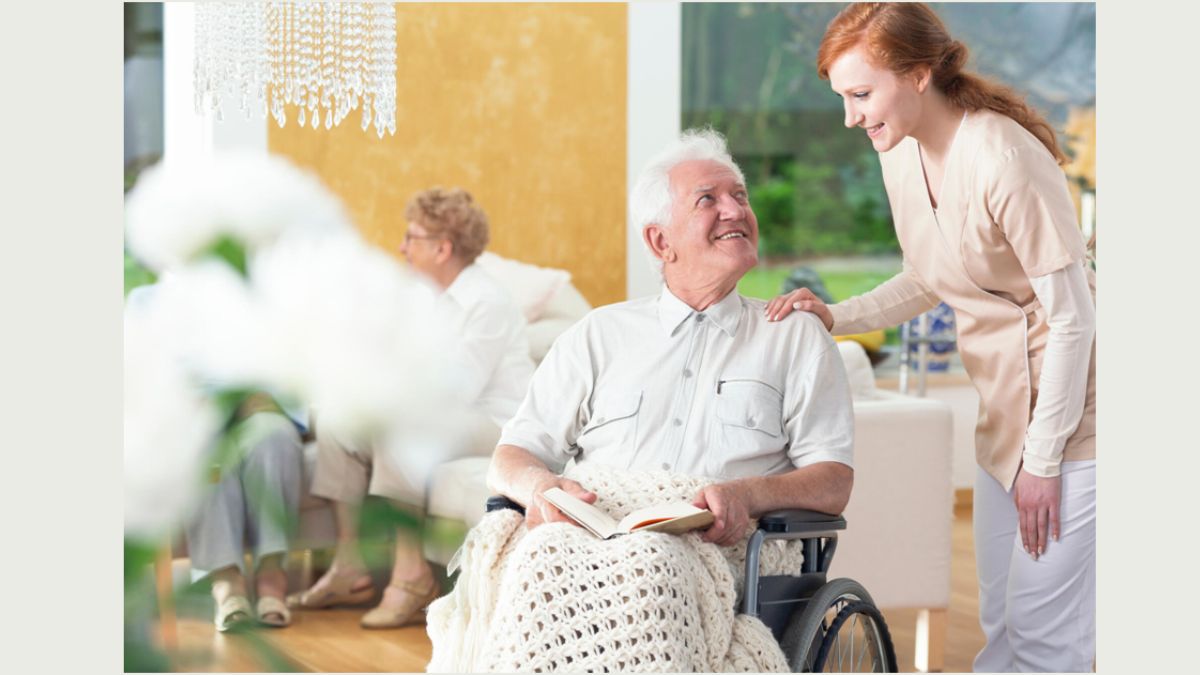
Growing older is not about slowing down-it’s about living with comfort, dignity, and choice. Each stage of life brings new needs, but also new ways to stay active and fulfilled. A thoughtful care plan helps seniors do more than manage their health; it helps them keep their independence and sense of purpose.
When care is designed to address both body and mind, seniors thrive. They stay engaged, make their own choices, and enjoy daily routines that fit who they are. A good plan is never one-size-fits-all’s personal, flexible, and centered on living well.
Read on to see how comprehensive senior care creates balance, safety, and joy in everyday life.
Building a Plan Around the Person
The best care plans begin with listening. Every senior has a different rhythm, and understanding their preferences shapes how care is provided.
Some may need daily medical support, while others only want help with small tasks. When caregivers take time to know each person’s habits, health history, and goals, the plan becomes more meaningful and effective.
This kind of care respects independence. It lets seniors take part in decisions that affect them, which strengthens confidence and emotional well-being. A strong plan combines compassion with structure-it supports daily living without taking away choice.
Families find peace of mind knowing their loved ones are in safe, encouraging environments. Homes that specialize in personalized care, like Cedarburg assisted living homes, understand that true independence grows when support is steady but gentle.
The Health Connection
Good care begins with good health. Every care plan should help seniors stay strong in both body and mind.
Regular check-ups, healthy meals, and light exercise keep energy high. Simple activities like reading, talking, or listening to music can also keep the mind active and the heart happy.
Preventive care matters a lot. Finding small health problems early helps avoid stress and discomfort. With skilled caregivers, taking medicine or following therapy becomes easy and safe. When medical care and daily living support work together, life feels smoother, calmer, and more enjoyable every day.
Living with Purpose and Joy
Independence is more than doing things alone. It’s about making choices and feeling part of something.
Seniors who join hobbies, group events, or community activities often stay healthier and happier. Care plans that support movement, creativity, and friendship remind them that life is still full of joy and discovery.
Simple routines like morning walks or gardening create a meaningful rhythm. Each new day becomes a chance to learn, to smile, and to keep growing- not just getting older.
A Future Designed with Care
Comprehensive care is about creating a future that feels safe, active, and full of meaning. It combines health, comfort, and personal choice into one simple goal: living with dignity.
A well-made plan doesn’t just care for the body-it nurtures the heart and spirit too. With the right guidance and environment, seniors can enjoy independence that lasts, surrounded by care that understands what truly matters.
HEALTH
Nabota 200 Units – Korean Botulinum with a Natural Finish
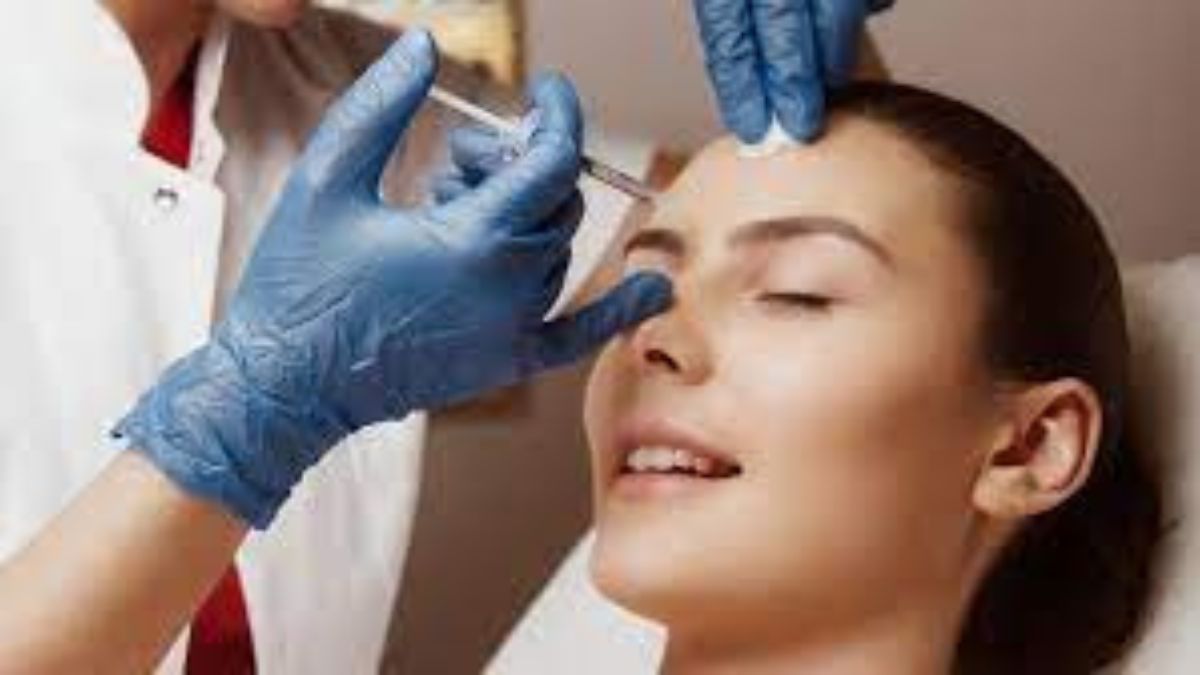
Some aesthetic injectables work — but everyone notices. That’s not the goal for most patients. What they want is subtle help, not a frozen stare. That’s why nabota 200 units, a Korean-made botulinum product, is quietly becoming a favorite among medical professionals. It softens lines where they don’t belong but lets emotion stay on the face.
This isn’t a trend product or a flashy name. Nabota has a very specific purpose: calm down the muscle movement that pulls skin into folds. Crow’s feet, frown lines, and forehead creases are often the result of repeated expression over time. Injecting Nabota into targeted areas helps ease that tension. The muscles still work — just a bit less intensely — and the skin begins to smooth over.
What makes this formula stand out is that it doesn’t wipe away character. The face doesn’t go stiff. It moves. You smile, blink, react — naturally. That’s a major reason why many doctors trust Nabota over older or harsher alternatives.
That’s part of why koreaderma.shop has become a go-to source for clinics looking for the best place to buy korean botox online. The packaging is dependable, the product is trusted, and the outcomes with nabota 200 units speak for themselves.
Inside each Nabota package is a single vial holding nabota 200 units of botulinum toxin, in powder form. It’s not ready to use right away — it needs to be carefully diluted and only then injected. The actual dosage depends on the patient. Some people need a little more, others a little less. That decision is made by the practitioner based on what they see — muscle movement, skin condition, and the client’s preferences.
Usually, the first changes start to appear within a few days. It’s a gradual shift, not a dramatic one. By the second week, many patients feel their skin has relaxed — fewer visible creases, less tension. It’s not about looking different; it’s more about looking rested. And the results tend to last. Most enjoy the effect for five to six months, sometimes longer if their routine stays consistent.
Outside of wrinkle treatment, Nabota also has medical uses. It’s sometimes applied to manage muscle twitching around the eyes or reduce excessive sweating, especially in the hands and underarms. These procedures follow strict clinical guidelines, and they’re definitely not something to try without proper assessment. There are clear cases when the treatment isn’t suitable — like during pregnancy, active illness, or if someone has certain health conditions such as blood clotting issues or immune problems.
Before an appointment, it’s usually a good idea to avoid things that can affect circulation or healing. That might mean skipping alcohol, some medications, or even hot baths. Smoking can also interfere with recovery. These aren’t rules just for show — they genuinely help reduce swelling and improve how the product works.
What people like most about Nabota is that it doesn’t scream “cosmetic procedure.” It blends in. Friends won’t know what changed — they’ll just see you look fresher. And that quiet effectiveness is often what patients want: not a new face, just a lighter version of their own.
For professionals, consistency is everything. With Nabota, results tend to follow a reliable pattern. That matters a lot, especially when you’re treating delicate areas like around the mouth or eyes. You want to know how the product behaves. And when it behaves well — as Nabota does — you keep coming back to it.

 Cartoon4 months ago
Cartoon4 months agoUnlocking the Potential of Nekopoi.care: A Comprehensive Guide

 Game2 years ago
Game2 years agoExploring Aopickleballthietke.com: Your Ultimate Pickleball Destination

 BUSINESS2 years ago
BUSINESS2 years agoUnraveling the Mystery of 405 Howard Street San Francisco charge on Credit Card

 BUSINESS4 months ago
BUSINESS4 months agoWhat Companies Are In The Consumer Services Field

 HOME IMPROVEMENT2 years ago
HOME IMPROVEMENT2 years agoVtrahe vs. Other Platforms: Which One Reigns Supreme?

 ENTERTAINMENT1 year ago
ENTERTAINMENT1 year agoUnderstanding Bunkr Album: A Comprehensive Guide

 ENTERTAINMENT2 years ago
ENTERTAINMENT2 years agoThe Ultimate Guide to MP3Juices: Free Music Download

 TECHNOLOGY2 years ago
TECHNOLOGY2 years agoThe Guide to Using Anon Vault for Secure Data Storage
















